One is not born in Bali the way one is born in most parts of the world: one reincarnates, and one does so in a very particular way. Let us give it a look, such as it is still known in popular lore.
First the soul (atma), still hanging about in the world, has to be separated from its material envelope (panca mahabuta). This is done in months-long death, cremation and post-cremation rituals. It can then leave the middle world. To go where? To the “field of sorrow”—said to be in the depth of the sea, where it is subjected to torture for its karmic sins.
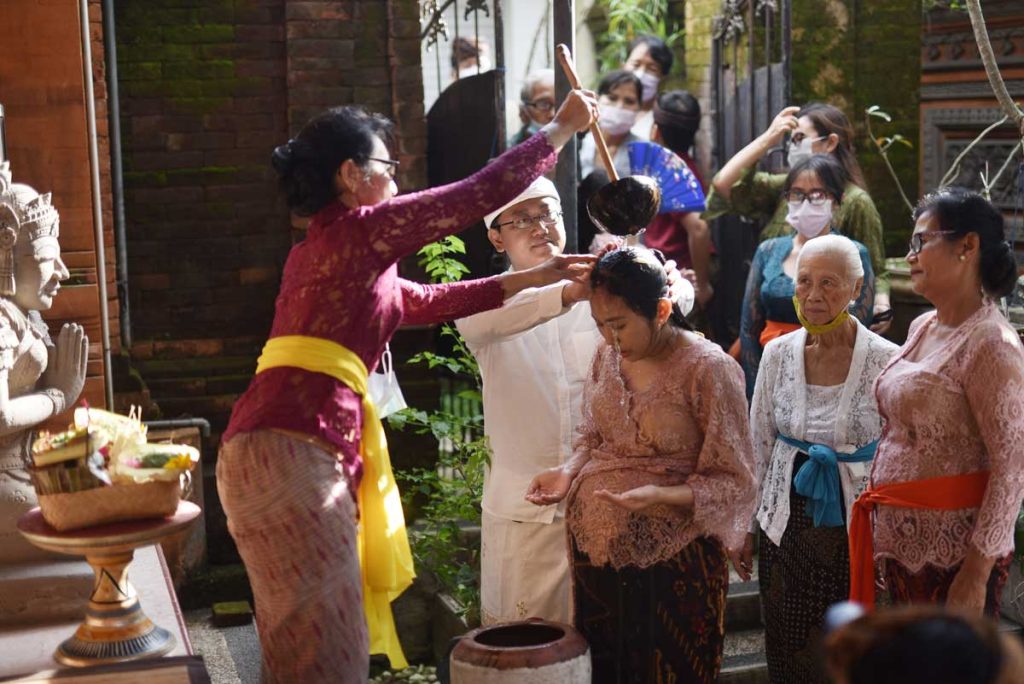
Upon reaching the extremity of its path through hell, the soul finds itself, totally purified, somewhere on top of the mountainous heights, where it is said to have become “pure water”, or yeh/tirta, alongside a whole pool of other ancestors. In the meantime, the family shrine (sanggah kemulan/merajan) has been prepared to welcome it in its rong tiga altar – the repository of ancestral symbols. Thus the soul, now a fully-fledged deified ancestor, can come down, together with all the other ancestors, on regular visits to the shrines of their common descendants. Most dances, festivals and other rites of welcome have their origin in such visits. Once there, the soul waits for the right time to reincarnate among its “children” –also known as its pee (warih/enceh} or dew (damuh).
Yet this is not an easy thing to incarnate. It has to be done at the right calendar time and under the right conditions. Luckily the Balinese are accustomed to communicate (nunas raos) with their ancestors through the intercession of balian/shamans and ask them for blessing and favours. Asking ancestors for a child is of course a favourite. Childless and especially son-less couples spend much time and money trying to entice the “right” soul to reincarnate. This has to be done properly. Souls from different ancestors’ lines may compete to insert themselves in an “expecting” woman’s womb. There are even cheaters: the wrong soul coming down, although it will become obvious much later in life. In any case special nakti prayers are requested, usually performed by the couple in a clan temple or in a reputed temple shrine, up there in the mountains or in some far away village next to roots that resemble vaginas, believe it or not! Some people make vows: if their wish is fulfilled and they have a son who reaches adulthood, they will offer a dance performance or pay for the repair of a temple altar or gate. Most importantly, just before love making, it may be useful to utter the right mantra. Who knows? It may tip the balance and convince the right ancestor’s soul to come down.
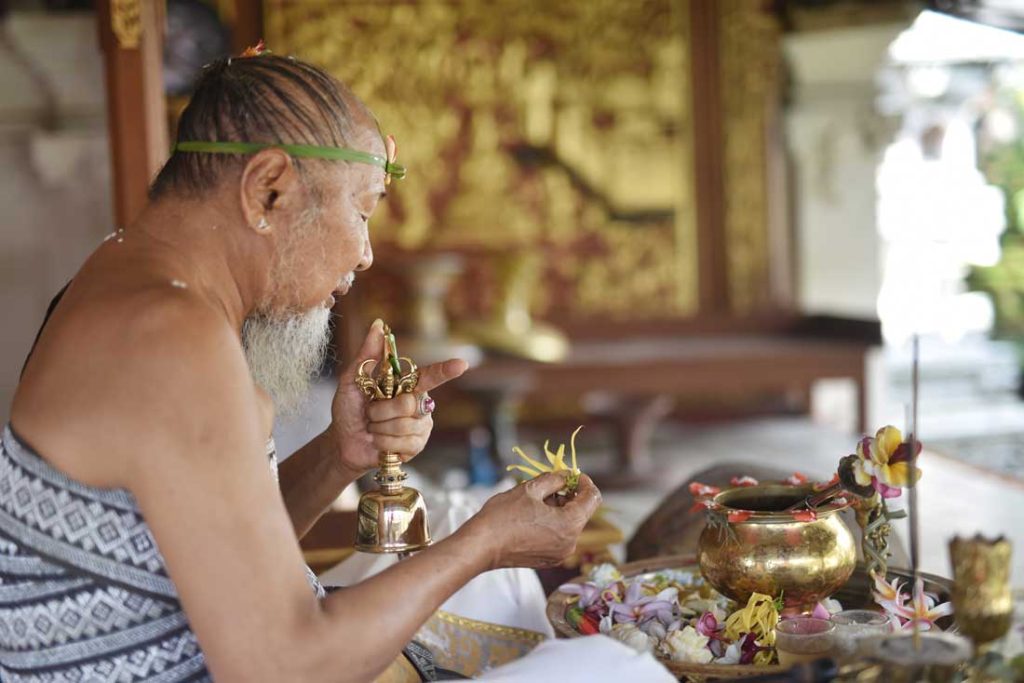
Is that all? No. The soul that comes down has to be welcomed, not yet at birth, but in the womb. In other words, the woman has to become pregnant. This is a complex matter, because both godly (dewa) and demonic (buta) elements are at work, and can be manipulated through prayers and mantras. It all begins with the spark of love, lit by Sang Hyang Lumanglang — the god of look, which renders possible the encounter, and merging, of the “white desire” – kama petak from the man, with the “red desire” – kama bang from the woman. Yet, it becomes “life” only when the soul –atma—inserts itself in this encounter.
When it does, it is a serious matter: the new “egg” (manik) carries the deified ancestor’s soul on its return journey to the middle world of humans. Yet, even when the soul is already in place, the new egg is not fully “human” before it is made fully complete by the gods: the sun and moon gods (Surya-Candra) make the right and left eyes, the god of the sea (Baruna) the mouth, the creator god (Brahma) makes the liver and so on. All the gods of the universe thus eventually intervene to create, still in the womb, bodily element after bodily element, the new human being, the now growing foetus. Macro and Micro-cosmos (Bhwana Agung, Bhwana Alit) interpenetrate one another.
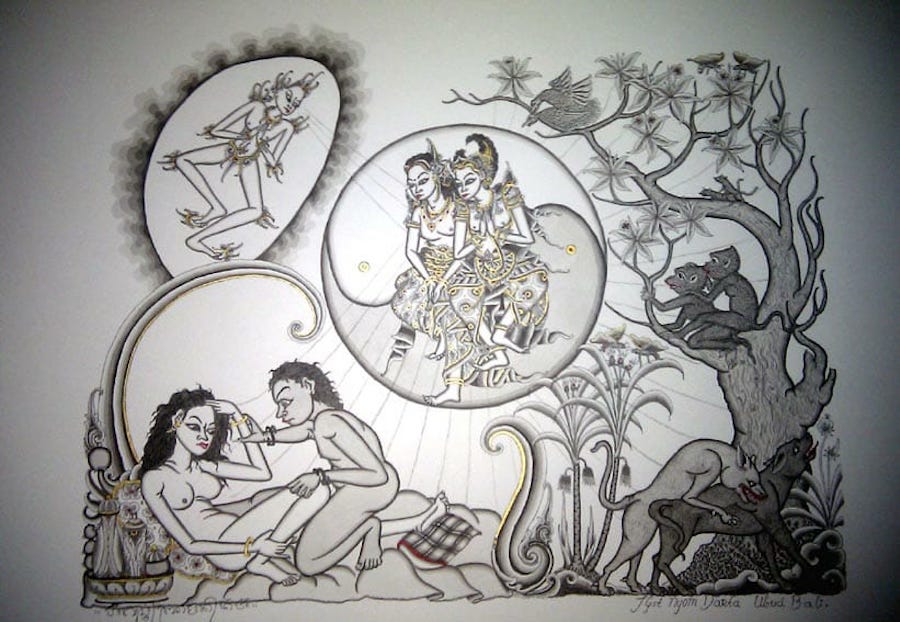
But don’t thinks its ends with the intervention of the gods. The egg has to be provided with what enables it to grow within the womb. It needs an envelope, blood, protective-and-feeding liquids. It also need a physical link to the mother’s body, the umbilical cord. These elements are not part of the foetus. Yet, they grow and develop together with it: they envelop it, feed and protect it. They are what the Balinese call, among many other names, the catur sanak, the four “brothers’. These brothers play an important role: they guide through life and beyond, first the unborn baby in the womb, then, after birth, the child and human individual. Thus the universe, be it “demonic” or godly, “inhabits” the human being from conception onward, as much as the human being inhabits the universe and is part of it .
In the woman’s womb, as the foetus grows into a “rare”, the transformations he undergoes threaten the state of balance required for a good birth. In popular parlances, there are all sorts of niskala (unseen) forces, leak witches, discontented lost souls (atma kesasar), that threaten the growing foetus and related incarnating soul on its way toward birth. A ceremony is thus needed: the magedong-gedongan. Taking place around the 5-7th month, it aims at keeping things in order both in the womb and outside it, in the pregnant woman’s environment, so that the pregnancy may come to its due conclusion under the best auspices.
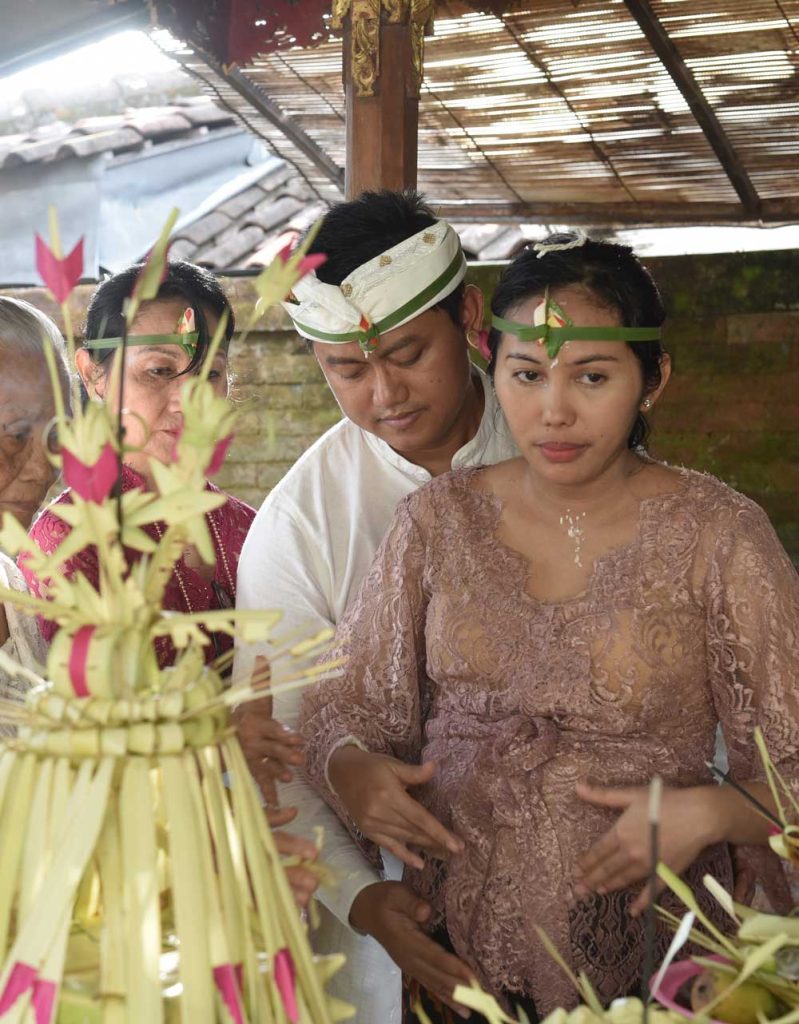
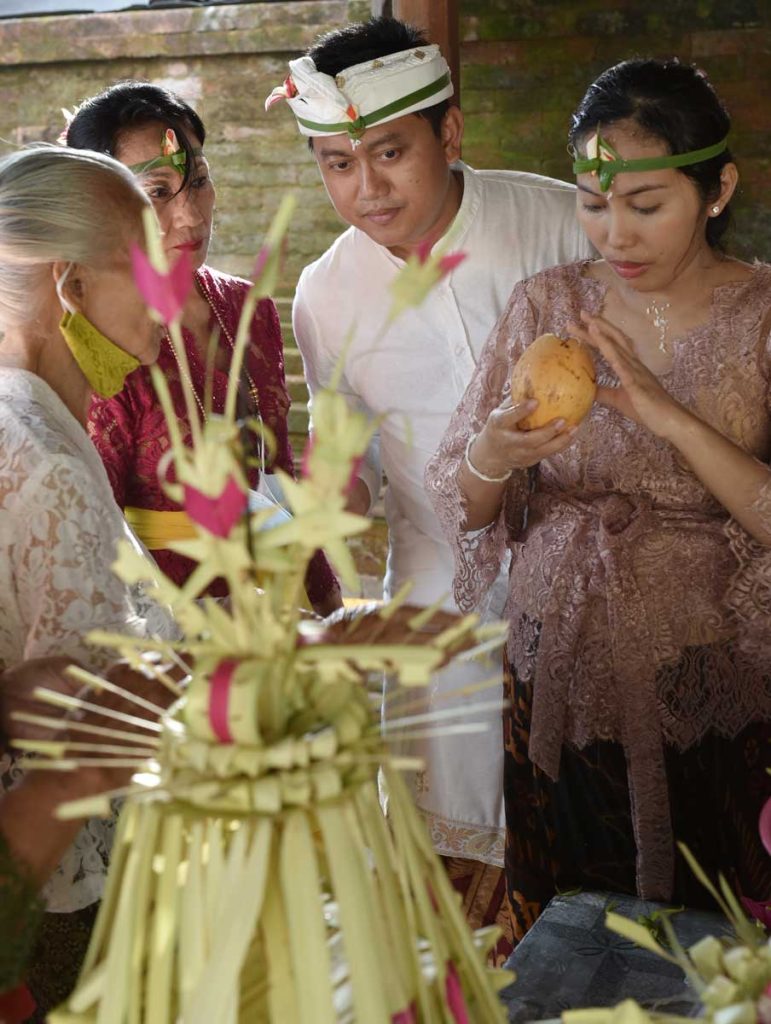
What does the ceremony consist of? Basically of cleansing rites, different from place to place. The ones shown in the accompanying pictures are in a brahmana family from Denpasar. The first step is usually a ritual bath in a nearby river, symbolising the Ganges (Gangga). Before the bath, an interesting rite is usually performed. Holding a stick to which is tied a cordon, the husband leads his wife in the water. He is then made to pierce a large leaf containing enough water for an eel and a fish. If the eel falls first through the hole, the baby to come will be a son. If it is the fish, it will be a girl. Then the couple is presented with a pengrujakan offering: a fruit dish that contains all the six natural tastes one meets in life –with the related feelings: sweet, sour, salty, hot, bitter and acidic. All this takes place with the appropriate offerings and sprinkling of holy water.
Once the magedong-gedongan is over, the woman and child in the womb just have to wait. Proceeding with their life while performing their daily and other rites. Order is paramount in the matter. The husband is thus advised to avoid being a source of disorder—lest it impacts the child. If all goes well, the foetus will eventually come to term. Birth and post-birth rites (mapag rare) will follow, welcoming the deified ancestor back into Bali – hence called little god – dewa. The big question now is: who is incarnating? This will be known 12 days after birth, when the parents consult a balian. In a trance of sorts, this balian will reveal, usually in an enigma-type wording, which kumpi grand-father or grand-mother is thus coming back for a new sojourn in Bali.
Decades later, if he/she has lived a regular life and gone through all the required rites, he/she will certainly end back again as a defied ancestor. And reside up there, above the mountainous heights, waiting for yet another return back to Bali. Paradise Bali.
The couple in the images are Ida Bagus Ngurah Prima and Ida Ayu Maitry Sanjiwani . In the first picture, they are symbolically cleansed by a penglukatan. In the second one one sees In the third






